 W
WSlavery has historically been widespread in Africa. Systems of servitude and slavery were common in parts of Africa in ancient times, as they were in much of the rest of the ancient world. When the trans-Saharan slave trade, Indian ocean slave trade and Atlantic slave trade began, many of the pre-existing local African slave systems began supplying captives for slave markets outside Africa.
 W
WAfrican Slave Trade Patrol was part of the suppression of the Atlantic slave trade between 1819 and the beginning of the American Civil War in 1861. Due to the abolitionist movement in the United States, a squadron of U.S. Navy warships and Cutters were assigned to catch slave traders in and around Africa. In 42 years about 100 suspected slave ships were captured.
 W
WAfro-Asians are African communities that have been living in the Indian Subcontinent for hundreds of years and have settled in countries such as India, Pakistan and Sri Lanka.
 W
WThe Atlantic slave trade, transatlantic slave trade, or Euro-American slave trade involved the transportation by slave traders of various enslaved African people, mainly to the Americas. The slave trade regularly used the triangular trade route and its Middle Passage, and existed from the 16th to the 19th centuries. The vast majority of those who were enslaved and transported in the transatlantic slave trade were people from Central and West Africa, who had been sold by other West Africans, or by half-European "merchant princes" to Western European slave traders, who brought them to the Americas. Except for the Portuguese, European slave traders generally did not participate in the raids because life expectancy for Europeans in sub-Saharan Africa was less than one year during the period of the slave trade. The South Atlantic and Caribbean economies were particularly dependent on labour for the production of sugarcane and other commodities. This was viewed as crucial by those Western European states that, in the late 17th and 18th centuries, were vying with each other to create overseas empires.
 W
WThe Atlantic slave trade to Brazil refers to the period of history in which there was a forced migration of Africans to Brazil for the purpose of slavery. It lasted from the mid-sixteenth century until the mid-nineteenth century. During the trade, more than three million Africans were transported across the Atlantic and sold into slavery. It was divided into four phases: The Cycle of Guinea ; the Cycle of Angola which trafficked people from Bakongo, Mbundu, Benguela and Ovambo; Cycle of Costa da Mina, now renamed Cycle of Benin and Dahomey, which trafficked people from Yoruba, Ewe, Minas, Hausa, Nupe and Borno; and the Illegal trafficking period, which was suppressed by the United Kingdom (1815-1851). During this period, to escape the supervision of British ships enforcing an anti-slavery blockade, Brazilian slave traders began to seek alternative routes to the routes of the West African coast, turning to Mozambique.
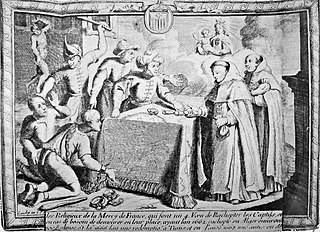 W
WThe Barbary slave trade refers to slave markets on the Barbary Coast of North Africa, which included the Ottoman provinces of Algeria, Tunisia and Tripolitania and the independent sultanate of Morocco, between the 16th and middle of the 18th century. The Ottoman provinces in North Africa were nominally under Ottoman suzerainty, but in reality they were mostly autonomous.
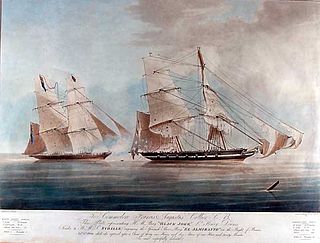 W
WThe third HMS Black Joke was probably built in Baltimore in 1824, becoming the Brazilian slave ship Henriquetta. The Royal Navy captured her in September 1827 and purchased her into the service. The Navy re-named her Black Joke, after an English song of the same name, and assigned her to the West Africa Squadron. Her role was to chase down slave ships, and over her five-year career she freed many hundreds of slaves. The Navy deliberately burnt her in May 1832 because her timbers had rotted to the point that she was no longer fit for active service.
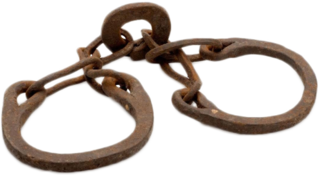 W
WThe breeding of enslaved people in the United States was the practice in slave states of the United States of slave owners to systematically force the reproduction of enslaved people to increase their profits. It included coerced sexual relations between enslaved men and women, forced pregnancies of enslaved people, and favoring women who could produce a relatively large number of children. The objective was to increase the number of enslaved people without incurring the cost of purchase, and to fill labor shortages caused by the termination of the Atlantic slave trade.
 W
WBristol, a port city in south-west England, was involved in the transatlantic slave trade. Bristol's part in the trade was prominent in the 17th and 18th centuries as the city's merchants used their position to gain involvement. It is estimated that over 500,000 enslaved African people were traded by Bristol merchants.
 W
WBunce Island is an island in the Sierra Leone River. It is situated in Freetown Harbour, the estuary of the Rokel River and Port Loko Creek, about 20 miles upriver from Sierra Leone's capital city Freetown. The island measures about 1,650 feet by 350 feet and houses a castle that was built by the Royal Africa Company in c.1670. Tens of thousands of Africans were shipped from here to the North American colonies of South Carolina and Georgia to be forced into slavery, and are the ancestors of many African Americans of the United States.
 W
WThe Congo–Arab War took place in what is now the Democratic Republic of the Congo between the forces of Belgian King Leopold II's Congo Free State and various Zanzibari Arab slave traders led by Sefu bin Hamid, the son of Tippu Tip. Fighting occurred in the eastern Congo between 1892 and 1894. It was a proxy war, with most of the fighting being done by native Congolese, who aligned themselves with either side and sometimes switched sides. The causes of the war were largely economic based, since Leopold and the Arabs were contending to gain control of the wealth of the Congo. The war ended in January 1894 with a victory of Leopold's Force Publique. Initially, King Leopold II collaborated with the Arabs, but competition struck over the control of ivory and the topic of Leopold II's humanitarian pledges to the Berlin Conference to end slavery. Leopold II's stance turned confrontational against his once-allies. The war against the Swahili-Arab economic and political power was presented as a Christian anti-slavery crusade.
 W
WHMS Crocodile was a 22-gun sixth-rate post-ship launched in South Shields in 1806. She was broken up at Portsmouth in October 1816.
 W
WOttobah Cugoano, also known as John Stuart, was a abolitionist, political activist and natural rights philosopher from West Africa who was active in Britain in the latter half of the eighteenth century. Captured in the Gold Coast and sold into slavery at the age of 13, he was shipped to Grenada in the West Indies. In 1772 he was purchased by a merchant who took him to England, where he learnt to read and write, and was freed. Later working for artists Richard and Maria Cosway, he became acquainted with several British political and cultural figures. He joined the Sons of Africa, a group of African abolitionists in Britain.
 W
WThe Danish slave trade occurred separately in two different periods: the trade in European slaves during the Viking Age, from the 8th to 10th century; and the Danish role in selling African slaves during the Atlantic slave trade, from the 1600s until a 1792 law to abolish the trade came into effect on 1 January 1803. Slavery continued in the Danish West Indies until July, 1848, when all unfree people in Danish lands were emancipated.
 W
WDar al Kuti was an Islamic state in the centre and northwest of the present Central African Republic which existed from around 1830 until 17 December 1912. From around 1800 the name Dar al-Kuti was given to a stretch of the frontier to the southwest of Wadai, a sultanate in the region of Lake Chad. The term “dar” signifies “abode” in Arabic, while the term “kuti” in the local language denotes a forest or densely-wooded area.
 W
WThe Dutch Slave Coast refers to the trading posts of the Dutch West India Company on the Slave Coast, which lie in contemporary Ghana, Benin, Togo and Nigeria. The primary purpose of the trading post was to supply slaves for the plantation colonies in the Americas. Dutch involvement on the Slave Coast started with the establishment of a trading post in Offra in 1660. Later, trade shifted to Ouidah, where the English and French also had a trading post. Political unrest caused the Dutch to abandon their trading post at Ouidah in 1725, now moving to Jaquim, at which place they built Fort Zeelandia. By 1760, the Dutch had abandoned their last trading post in the region.
 W
WThe Dutch West India Company was a chartered company of Dutch merchants as well as foreign investors. Among its founders was Willem Usselincx (1567–1647) and Jessé de Forest (1576–1624). On 3 June 1621, it was granted a charter for a trade monopoly in the Dutch West Indies by the Republic of the Seven United Netherlands and given jurisdiction over Dutch participation in the Atlantic slave trade, Brazil, the Caribbean, and North America. The area where the company could operate consisted of West Africa and the Americas, which included the Pacific Ocean and the eastern part of New Guinea. The intended purpose of the charter was to eliminate competition, particularly Spanish or Portuguese, between the various trading posts established by the merchants. The company became instrumental in the largely ephemeral Dutch colonization of the Americas in the seventeenth century. From 1624 to 1654, in the context of the Dutch-Portuguese War, the GWC held Portuguese territory in northeast Brazil, but they were ousted from Dutch Brazil following fierce resistance.
 W
WElmina Castle was erected by the Portuguese in 1482 as Castelo de São Jorge da Mina, also known as Castelo da Mina or simply Mina, in present-day Elmina, Ghana. It was the first trading post built on the Gulf of Guinea, and the oldest European building in existence south of the Sahara. First established as a trade settlement, the castle later became one of the most important stops on the route of the Atlantic slave trade. The Dutch seized the fort from the Portuguese in 1637, after an unsuccessful attempt to the same extent in 1596, and took over all of the Portuguese Gold Coast in 1642. The slave trade continued under the Dutch until 1814. In 1872, the Dutch Gold Coast, including the fort, became a possession of Great Britain.
 W
WFort James is located in Accra, Ghana. It was built by the Royal African Company of England as a trading post for both gold and slaves in 1673, where it joined the Dutch Fort Crêvecœur (1649), and the Danish Fort Christiansborg (1652).
 W
WFort Metal Cross, originally Fort Dixcove, is a military structure in Dixcove, Ghana.
 W
WFort Winneba was a military structure designed to facilitate the slave trade. It was built in 1694 by the Royal African Company on the Gold Coast, in modern-day Ghana.
 W
WGberefu Island also known as Point of No Return is a populated historical island located in Badagry, a town and local government area of Lagos State, South-Western Nigeria. Symbolized by two poles slightly slanted towards each other and facing the Atlantic Ocean, the island was a major slave port after it was opened in 1473 during the Trans Atlantic Slave Trade era. According to Nigerian historians, as many as 10,000 slaves were believed to have been shipped to the Americas between 1518 and 1880 from the island.
 W
WWhen the German Empire came into existence in 1871, none of its constituent states had any overseas colonies. Only after the Berlin Conference in 1884 did Germany begin to acquire new overseas possessions, but it had a much longer relationship with colonialism dating back to the 1520s. Before the end of the Holy Roman Empire in 1806, various German states established chartered companies to set up trading posts; in some instances they also sought direct territorial and administrative control over these. After 1806, attempts at securing possession of territories overseas were abandoned; instead, private trading companies took the lead in the Pacific while joint-stock companies and colonial associations initiated projects elsewhere, although many never progressed beyond the planning stage.
 W
WThe House of Slaves and its Door of No Return is a museum and memorial to the Atlantic slave trade on Gorée Island, 3 km off the coast of the city of Dakar, Senegal. Its museum, which was opened in 1962 and curated until Boubacar Joseph Ndiaye's death in 2009, is said to memorialise the final exit point of the slaves from Africa. While historians differ on how many African slaves were actually held in this building, as well as the relative importance of Gorée Island as a point on the Atlantic slave trade, visitors from Africa, Europe, and the Americas continue to make it an important place to remember the human toll of African slavery.
 W
WThe Igbo, whose traditional territory is called the Bight of Biafra, became one of the principal ethnic groups to be enslaved during the Trans-Atlantic Slave Trade. An estimated 14.6% of all slaves were taken from the Bight of Biafra between 1650 and 1900. The Bight’s major slave trading ports were located in Bonny and Calabar. The majority of Igbo slaves were kidnapped during village raids. The journey for Igbo slaves often began in the ancient Cave Temple that was located in Arochukwu Kingdom. During this period, the three Igbo Kingdoms followed the same culture and religion, yet tended to operate very differently from each other. The Kingdom of Nri and the Independent Igbo States did not practice slavery, and slaves from neighbouring lands would often flee to these kingdoms in order to be set free. Arochukwu, on the other hand, practiced a system of indentured servitude that was remarkably different to chattel slavery in the Americas. Eventually, with Europeans beginning to encroach on Igbo territory, causing the kingdoms to desire weaponry to defend themselves. In order to obtain European goods and weaponry, Arochukwu began to raid villages of the other Igbo kingdoms - primarily those located in the Igbo hinterlands. People would be captured, regardless of gender, social status, or age. Slaves could have been originally farmers, nobility, or even people who had committed petty crimes. These captured slaves would be taken and sold to the British on the coast. Another way people were enslaved was through the divine oracle who resided in the Cave Temple complex. All Igbos practiced divination called Afa, but the Kingdom of Arochukwu was different because it was headed by a divine oracle who was in charge of making decisions for the king. During this time, if someone committed a crime, was in debt, or did something considered an "abomination", they would be taken to the cave complex to face the oracle for sentencing. The oracle, who was also influenced by the British, would sentence these people to slavery, even for small crimes. The victim would be commanded to walk further into the cave so that the spirits could "devour" them, but, in reality, they were taken to an opening on the other side and loaded directly onto a waiting boat. This boat would take them to a slave ship en route to the Americas.
 W
WJohn Kimber was the captain of a British slave ship who was tried for murder in 1792, after the abolitionist William Wilberforce accused him of torturing to death an enslaved teenage girl on the deck of his ship. Kimber was acquitted, but the trial gained much attention in the press. The case established that slave ships' crew could be tried for murder of slaves.
 W
WThe kizlar agha, formally the agha of the House of Felicity, was the head of the eunuchs who guarded the imperial harem of the Ottoman sultans in Constantinople.
 W
WCudjoe Kazoola Lewis, born Oluale Kossola, and also known as Cudjo Lewis, was the third to last known survivor of the Atlantic slave trade between Africa and the United States. Together with 115 other African captives, he was brought to the United States on board the ship Clotilda in 1860. The captives were landed in backwaters of the Mobile River near Mobile, Alabama, and hidden from authorities. The ship was scuttled to evade discovery, and was not found again until 2019.
 W
WAaron Lopez (1731–1782), born Duarte Lopez, was an Anglo-Portuguese Jewish merchant and philanthropist. Through his varied commercial ventures, he became the wealthiest person in Newport, Rhode Island, in British America. In 1761 and 1762, Lopez unsuccessfully sued the Colony of Rhode Island for citizenship.
 W
WMaafa, African Holocaust, Holocaust of Enslavement, or Black Holocaust are political neologisms popularized from 1988 onwards and used to describe the history and ongoing effects of atrocities inflicted on African people, particularly when committed by non-Africans and argued as "continued to the present day" through imperialism, colonialism and other forms of oppression. For example, Maulana Karenga (2001) puts slavery in the broader context of the Maafa, suggesting that its effects exceed mere physical persecution and legal disenfranchisement: the "destruction of human possibility involved redefining African humanity to the world, poisoning past, present and future relations with others who only know us through this stereotyping and thus damaging the truly human relations among peoples".
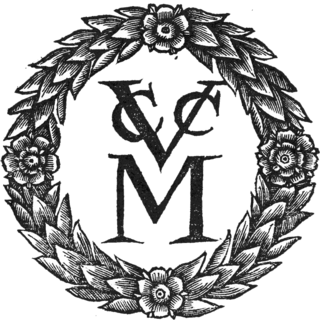 W
WThe Middelburgsche Commercie Compagnie (MCC) was a Dutch trading company established in 1720 in the Zeeland capital of Middelburg, Netherlands. It was initially called the Commercial Company of the city of Middelburg. However, after the archive industry was published in 1950, it became known as the Middelburg Commercial Company. After the monopoly of the Dutch West India Company for the Atlantic slave trade was abolished in 1730, the MCC became the principal Dutch slave trading company. The company was eventually liquidated in 1889.
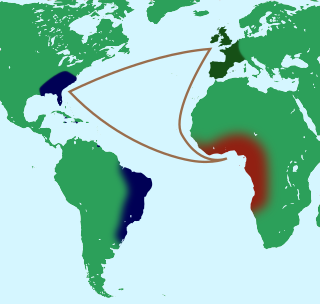 W
WThe Middle Passage was the stage of the triangular trade in which millions of Africans were forcibly transported to the New World as part of the Atlantic slave trade. Ships departed Europe for African markets with manufactured goods, which were traded for purchased or kidnapped Africans, who were transported across the Atlantic as slaves; the enslaved Africans were then sold or traded for raw materials, which would be transported back to Europe to complete the voyage. The First Passage was the transportation of captives (slaves) to the African ports, such as Elmina, where they would be loaded onto ships. The Final Passage was the journey from the port of disembarkation, such as Charleston, to the plantation or other destination where they would be put to work. The Middle Passage across the Atlantic joined these two. Voyages on the Middle Passage were large financial undertakings, generally organized by companies or groups of investors rather than individuals.
 W
WMiddle Passage (1990) is a historical novel by American writer Charles R. Johnson about the final voyage of an illegal American slave ship on the Middle Passage. Set in 1830, it presents a personal and historical perspective of the illegal slave trade in the United States, telling the story of Rutherford Calhoun, a freed slave who unknowingly boards a slave ship bound for Africa in order to escape a forced marriage. The novel received critical acclaim, winning the 1990 U.S. National Book Award for Fiction.
 W
WOsifekunde of Ijebu was an Ijebu man whose documented narrative, as a victim of The Trans Atlantic Slave Trade, serves as one of the earliest Western records of Yoruba land.
 W
WHMS Owen Glendower was a Royal Navy 36-gun fifth-rate Apollo-class frigate launched in 1808 and disposed of in 1884. In between she was instrumental in the seizure of the Danish island of Anholt, captured prizes in the Channel during the Napoleonic Wars, sailed to the East Indies and South America, participated in the suppression of the slave trade, and served as a prison hulk in Gibraltar before she was sold in 1884.
 W
WThe Royal African Company (RAC) was an English mercantile (trading) company set up in 1660 by the royal Stuart family and City of London merchants to trade along the west coast of Africa. It was led by the Duke of York, who was the brother of Charles II and later took the throne as James II. It shipped more African slaves to the Americas than any other institution in the history of the Atlantic slave trade.
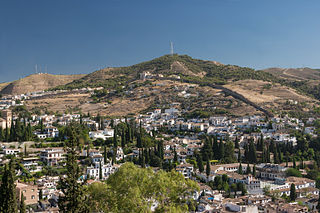 W
WSacromonte, sometimes also called Sacramonte, is a traditional neighbourhood in the eastern area of the city of Granada in Andalusia, Spain. It is one of the six neighbourhoods that make up the urban district of Albayzín and borders the neighbourhoods of Albayzín, San Pedro, Realejo-San Matías, El Fargue and Haza Grande.
 W
WA scramble was an early form of slave auction that took place at the height of the Atlantic slave trade in the European colonies of the West Indies and the United States in the eighteenth century, so-called because buyers would literally "scramble" to gather as many slaves as they could get hold of.
 W
WThe Slave Coast is a historical name formerly used for that part of coastal West Africa along the Bight of Benin that is located between the Volta River and the Lagos Lagoon. The name is derived from the region's history as a major source of Africans that were taken into slavery during the Atlantic slave trade from the early 16th century to the late 19th century. Other nearby coastal regions historically known by their prime colonial export are the Gold Coast, the Ivory Coast, and the Pepper Coast.
 W
WThe 1733 slave insurrection on St. John in the Danish West Indies started on November 23, 1733, when 150 African slaves from revolted against the owners and managers of the island's plantations. Lasting several months into August 1734, the slave rebellion was one of the earliest and longest slave revolts in the Americas. The Akwamu slaves captured the fort in Coral Bay and took control of most of the island. They intended to resume crop production under their own control and use Africans of other tribes as slave labor.
 W
WSlave ships were large cargo ships specially built or converted from the 17th to the 19th century for transporting slaves. Such ships were also known as "Guineamen" because the trade involved human trafficking to and from the Guinea coast in West Africa.
 W
WThe Swedish slave trade mainly occurred in the early history of Sweden when the trade of thralls was one of the pillars of the Norse economy. During the raids, the Vikings often captured and enslaved militarily weaker peoples they encountered, but took the most slaves in raids of the British Isles, Ireland and Slavs in Eastern Europe. This practice lasted in the 6th through 11th centuries until formally abolished in 1335. A smaller trade of African slaves happened during the 17th and 18th centuries, around the time Swedish overseas colonies were established in North America (1638) and in Africa (1650). It remained legal until 1813.
 W
WSlavery in the United States was the legal institution of human chattel enslavement, primarily of Africans and African Americans, that existed in the United States of America from its founding in 1776 until passage of the Thirteenth Amendment in 1865. Slavery was established throughout European colonization in the Americas. From early colonial days, it was practiced in Britain's colonies, including the Thirteen Colonies which formed the United States. Under the law, an enslaved person was treated as property and could be bought, sold, or given away. Slavery lasted in about half of U.S. states until 1865. As an economic system, slavery was largely replaced by sharecropping and convict leasing.
 W
WThe Sons of Africa were a late 18th-century group in Britain that campaigned to end African chattel slavery. The "corresponding society" has been called the Britain's first black political organisation. Its members were educated Africans in London, included formerly enslaved men like Ottobah Cugoano, Olaudah Equiano and other leading members of London's black community.
 W
WThe South Sea Company was a British joint-stock company founded in January 1711, created as a public-private partnership to consolidate and reduce the cost of the national debt. To generate income, in 1713 the company was granted a monopoly to supply African slaves to the islands in the "South Seas" and South America. When the company was created, Britain was involved in the War of the Spanish Succession and Spain and Portugal controlled most of South America. There was thus no realistic prospect that trade would take place, and as it turned out, the Company never realised any significant profit from its monopoly. However, Company stock rose greatly in value as it expanded its operations dealing in government debt, and peaked in 1720 before suddenly collapsing to little above its original flotation price. The notorious economic bubble thus created, which ruined thousands of investors, became known as the South Sea Bubble.
 W
WThe Swahili coast is a coastal area of the Indian Ocean in Southeast Africa inhabited by the Swahili people. it includes Sofala (Mozambique), Mombasa, Gede, Pate Island, Lamu, Malindi, and Kilwa. In addition, several coastal islands are included in the Swahili coast such as Zanzibar and Comoros. Areas of what is today considered the Swahili coast were historically known as Azania or Zingion in the Greco-Roman era, and as Zanj or Zinj in Middle Eastern, Chinese and Indian literature from the 7th to the 14th century. The word "Swahili" means people of the coast in Arabic and is derived from the word "sahil" (coast). The Swahili people and their culture formed from a distinct mix of African and Arab origins. The Swahilis were traders and merchants and readily absorbed influences from other cultures. Historical documents including the Periplus of the Erythraean Sea and works by Ibn Battuta describe the society, culture, and economy of the Swahili coast at various points in its history. The Swahili coast has a distinct culture, demography, religion and geography, and as a result - along with other factors, including economic - has witnessed rising secessionism.
 W
WTippu Tip, or Tippu Tib, real name Hamad bin Muhammad bin Juma bin Rajab el Murjebi, was an Afro-Arab slave trader, ivory trader, explorer, plantation owner and governor. He worked for a succession of the sultans of Zanzibar. Tippu Tip traded in slaves for Zanzibar's clove plantations. As part of the large and lucrative ivory trade, he led many trading expeditions into Central Africa, constructing profitable trading posts deep into the region. He bought the ivory from local suppliers and resold it for a profit at coastal ports.
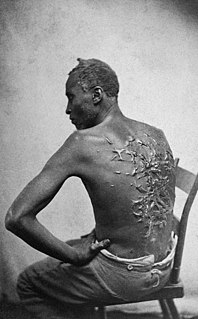 W
WThe treatment of enslaved people in the United States varied by time and place, but was generally brutal, especially on plantations. Whipping and rape were routine, but usually not in front of white outsiders, or even the plantation owner's family. An enslaved person could not be a witness against a white; enslaved people were sometimes required to whip other enslaved people, even family members. There were also businesses to which a slave owner could turn over the whipping. Families were often split up by the sale of one or more members, usually never to see or hear of each other again. There were some relatively enlightened slave owners—Nat Turner said his master was kind—but not on large plantations. Only a small minority of enslaved people received anything resembling decent treatment; one contemporary estimate was 10%, not without noting that the ones well treated desired freedom just as much as those poorly treated. Good treatment could vanish upon the death of an owner. As put by William T. Allan, a slaveowner's abolitionist son who could not safely return to Alabama, "cruelty was the rule, and kindness the exception".
 W
WUssher Fort is a fort in Accra, Ghana. It was built by the Dutch in 1649 as Fort Crèvecœur, and is a day's march from Elmina and to the east of Accra on a rocky point between two lagoons. It was one of three forts that Europeans built in the region during the middle of the 17th century. Fort Crèvecœur was part of the Dutch Gold Coast. The Anglo-Dutch Gold Coast Treaty (1867), which defined areas of influence on the Gold Coast, transferred it to the British in 1868.
 W
WVoyages: The Trans-Atlantic Slave Trade Database is a database run by researchers at Emory University which aims to present all documentary material pertaining to the transatlantic slave trade. It is a sister project to African Origins.
 W
WThe Royal Navy established the West Africa Squadron at substantial expense in 1808 after Parliament passed the Slave Trade Act of 1807, an Act for the Abolition of the Slave Trade. The squadron's task was to suppress the Atlantic slave trade by patrolling the coast of West Africa. With a home base at Portsmouth, it began with two small ships, the 32-gun fifth-rate frigate HMS Solebay and the Cruizer-class brig-sloop HMS Derwent. At the height of its operations, the squadron employed a sixth of the Royal Navy fleet and marines. In 1819 the Royal Navy established a West Coast of Africa Station and the West Africa Squadron became known as the Preventative Squadron. It remained an independent command until 1856 and then again 1866 to 1867.
 W
WWest Indiaman was a general name for any merchantman sailing ship making runs from the Old World to the West Indies and the east coast of the Americas. These ships were generally strong ocean-going ships capable of handling storms in the Atlantic Ocean. The term was used to refer to vessels belonging to the Danish, Dutch, English, and French West India companies.
 W
WWhite slavery refers to the chattel slavery of Europeans, whether by non-Europeans, or by other Europeans. Slaves of European origin were present in ancient Rome and the Ottoman Empire.
 W
WThe Zong massacre was a mass killing of more than 130 enslaved Africans by the crew of the British slave ship Zong on and in the days following 29 November 1781. The Gregson slave-trading syndicate, based in Liverpool, owned the ship and sailed her in the Atlantic slave trade. As was common business practice, they had taken out insurance on the lives of the enslaved people as cargo. According to the crew, when the ship ran low on drinking water following navigational mistakes, the crew threw enslaved people overboard into the sea.